Describing cermics - shapes, forms etc
+7
dantheman
ppcollectables
Potty
brin mcardle
NaomiM
Mordeep
Greenie1689
11 posters
Page 1 of 1
 Describing cermics - shapes, forms etc
Describing cermics - shapes, forms etc
Hi everyone,
Would it be possible for someone to post on here (or direct me to somewhere I might find it) a glossary of terms for describing the various shapes and forms of ceramics?
I'm conscious that my posts err towards the basic and in order to be a fully-contributing member of the community I need to learn the lingo!
Also a basic guide to fabrics might be useful too. For instance, what, exactly, is "stoneware" and how do you identify it?
If this could be done with photographs, so much the better!
Cheers
Greenie
Would it be possible for someone to post on here (or direct me to somewhere I might find it) a glossary of terms for describing the various shapes and forms of ceramics?
I'm conscious that my posts err towards the basic and in order to be a fully-contributing member of the community I need to learn the lingo!
Also a basic guide to fabrics might be useful too. For instance, what, exactly, is "stoneware" and how do you identify it?
If this could be done with photographs, so much the better!
Cheers
Greenie
Last edited by Greenie1689 on Tue Sep 29, 2015 11:27 am; edited 1 time in total (Reason for editing : Punctuation)
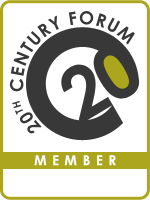
Greenie1689- Number of posts : 81
Location : Cumbria
Registration date : 2015-08-28
 Re: Describing cermics - shapes, forms etc
Re: Describing cermics - shapes, forms etc
All you need greenie is to "sex it up" and describe pottery as if it was food 
Works a treat on eBay and such web based purveyors of pottery porn. So a tatty old green jug becomes "a classic voluptuous mint green lemonade jug oozing 19th century style with deep undercurrents of apple and chocolate" Does not matter if what you describe bares only the faintest link to the item, no one will admit to not recognising style. It's how apple end up making more than most countries each year.

Works a treat on eBay and such web based purveyors of pottery porn. So a tatty old green jug becomes "a classic voluptuous mint green lemonade jug oozing 19th century style with deep undercurrents of apple and chocolate" Does not matter if what you describe bares only the faintest link to the item, no one will admit to not recognising style. It's how apple end up making more than most countries each year.

Mordeep-
 Number of posts : 847
Number of posts : 847
Age : 56
Location : Richmond Surrey
Registration date : 2015-06-05
 Re: Describing cermics - shapes, forms etc
Re: Describing cermics - shapes, forms etc
I just learnt by handling pots. Pick up enough Denby and you get an idea what stoneware looks like. Pick up Devon ware and you'll get a feel for terracotta. Etc.
_________________
Carrot cake is just fake cake
 Re: Describing cermics - shapes, forms etc
Re: Describing cermics - shapes, forms etc
thanks for posting that Greenie...i feel the same way
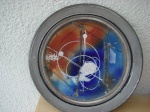
brin mcardle- Number of posts : 2707
Age : 77
Location : upminster,essex
Registration date : 2011-06-18
 Re: Describing cermics - shapes, forms etc
Re: Describing cermics - shapes, forms etc
Someone (I think Ed) posted a glossary of terms somewhere on here, will see if I can find it.
_________________
lozzy68 wrote:I Had A Feeling It Wasn't A gnome As Studio-Pots Said There Is No Hat On Him
NaomiM wrote:I'm watching other Willies, so maybe I'll get one at some point.
studio-pots wrote:I know my raku
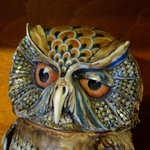
Potty- Number of posts : 3661
Location : Midlands
Registration date : 2010-09-28
 Re: Describing cermics - shapes, forms etc
Re: Describing cermics - shapes, forms etc
Here it is:
https://www.20thcenturyforum.com/t7587-ceramic-terms-glossary
This post I made years back may help you distinguish between they type's of clay body used:
https://www.20thcenturyforum.com/t7587-ceramic-terms-glossary
This post I made years back may help you distinguish between they type's of clay body used:
Potty wrote:Stoneware - Weighs more than earthenware (Feels like it does at least), is *usually* more of a grey(stone colour), has a different texture than earthenware. Is a tougher material.
Earthenware - Lighter than stoneware/porcelain, Does not feel as dense, Often more a earthly colour (bit like terracotta, but can also be white like porcelain). Cracks/chips more easily than stoneware/porcelain.
Porcelain - Usually a just off white colour, feels closer to glass than stoneware or earthenware, stronger than earthenware, will often have a nice ring when tapped. When thin enough is semi translucent.
There is hard and soft paste porcelain, hard is again more like glass and any chips will look more like chipped glass than pottery, soft paste is more grainy and chips more like earthenware, not quite such a nice ring when tapped)
There are a lot more (bone china etc) but that is the difference of the main ones, others may be able to describe it better than I.
_________________
lozzy68 wrote:I Had A Feeling It Wasn't A gnome As Studio-Pots Said There Is No Hat On Him
NaomiM wrote:I'm watching other Willies, so maybe I'll get one at some point.
studio-pots wrote:I know my raku

Potty- Number of posts : 3661
Location : Midlands
Registration date : 2010-09-28
 Re: Describing cermics - shapes, forms etc
Re: Describing cermics - shapes, forms etc
As others have said it about getting familiar with your subject, handling it etc. One of the best ways is by viewing at good quality auctions i.e where the catalogues have detailed descriptions and the lots are of good quality. If there is nothing close to you then study on-line catalogues. You can then match shape descriptions to actual photos. Try it with the current 20th century design catalogue on the Woolley and Wallis website. The more you can handle pieces the more knowledge you will gain re marks and backstamps, weight, glazes etc.
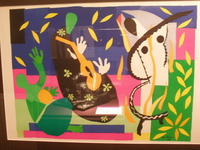
ppcollectables- Number of posts : 423
Location : surrey/hants border
Registration date : 2009-05-31
 Re: Describing cermics - shapes, forms etc
Re: Describing cermics - shapes, forms etc
I learned lots by going to pottery fairs and talking to the potters,it's much easier when they can hand you a pot while describing the process and materials used
_________________
'Edith Swan takes it up the Swanee and she loves it more than Christmas day.'

dantheman- Consultant

-
 Number of posts : 15463
Number of posts : 15463
Location : Lincolnshire ( the veg patch of England)
Registration date : 2008-02-03
 Re: Describing cermics - shapes, forms etc
Re: Describing cermics - shapes, forms etc
Loads of perfectly good advice but what annoys me and might make you feel better Greenie is many of these "TV Antique Experts" seem to have no idea about what pottery is made of. They seem to think earthenware, china, pottery and porcelain are just alternative words for the same thing and none seem to know that there is such a thing as stoneware.
_________________
Now you should know by now that Potty and I need to see your bottom - we're funny that way!

big ed-
 Number of posts : 11932
Number of posts : 11932
Age : 71
Location : UK
Registration date : 2008-03-22
 Re: Describing cermics - shapes, forms etc
Re: Describing cermics - shapes, forms etc
Yes SP, and I'd love to know what they are getting paid!
Though Stoneware can be any colour, from dark chocolate (Langley 1880s), to white (Langley 1950s).
Though Stoneware can be any colour, from dark chocolate (Langley 1880s), to white (Langley 1950s).
 Re: Describing cermics - shapes, forms etc
Re: Describing cermics - shapes, forms etc
I find that a little knowledge of the process helps a collector to understand what they are looking at.
for example, just knowing what glaze colours are the result of high firing can be a great help
for example, just knowing what glaze colours are the result of high firing can be a great help
_________________
'Edith Swan takes it up the Swanee and she loves it more than Christmas day.'

dantheman- Consultant

-
 Number of posts : 15463
Number of posts : 15463
Location : Lincolnshire ( the veg patch of England)
Registration date : 2008-02-03
 Re: Describing cermics - shapes, forms etc
Re: Describing cermics - shapes, forms etc
Maybe take some pottery classes. You can learn a lot that way, including glaze techniques etc.
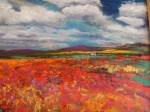
climberg64- Number of posts : 1254
Location : North East
Registration date : 2010-01-20
 Re: Describing cermics - shapes, forms etc
Re: Describing cermics - shapes, forms etc
just visiting potters and watching them work can teach you a lot, even watching them on youtube can be a big help
_________________
'Edith Swan takes it up the Swanee and she loves it more than Christmas day.'

dantheman- Consultant

-
 Number of posts : 15463
Number of posts : 15463
Location : Lincolnshire ( the veg patch of England)
Registration date : 2008-02-03
 Re: Describing cermics - shapes, forms etc
Re: Describing cermics - shapes, forms etc
It does help, when collecting, to recognise when things go wrong in firing and glaze and clay - bloating, shivering, glaze crawling, bottom heavy, drying cracks and rats-tail handles, etc - as they can all point to a student piece. Potters blogs are useful for learning such things, eg Doug Fitch's uploads on YouTube
_________________
Carrot cake is just fake cake
 Re: Describing cermics - shapes, forms etc
Re: Describing cermics - shapes, forms etc
Wow!!
Thanks, EVERYONE, for your help and advice!
The glossary looks especially useful.
Greenie
Thanks, EVERYONE, for your help and advice!
The glossary looks especially useful.
Greenie

Greenie1689- Number of posts : 81
Location : Cumbria
Registration date : 2015-08-28
Page 1 of 1
Permissions in this forum:
You cannot reply to topics in this forum

